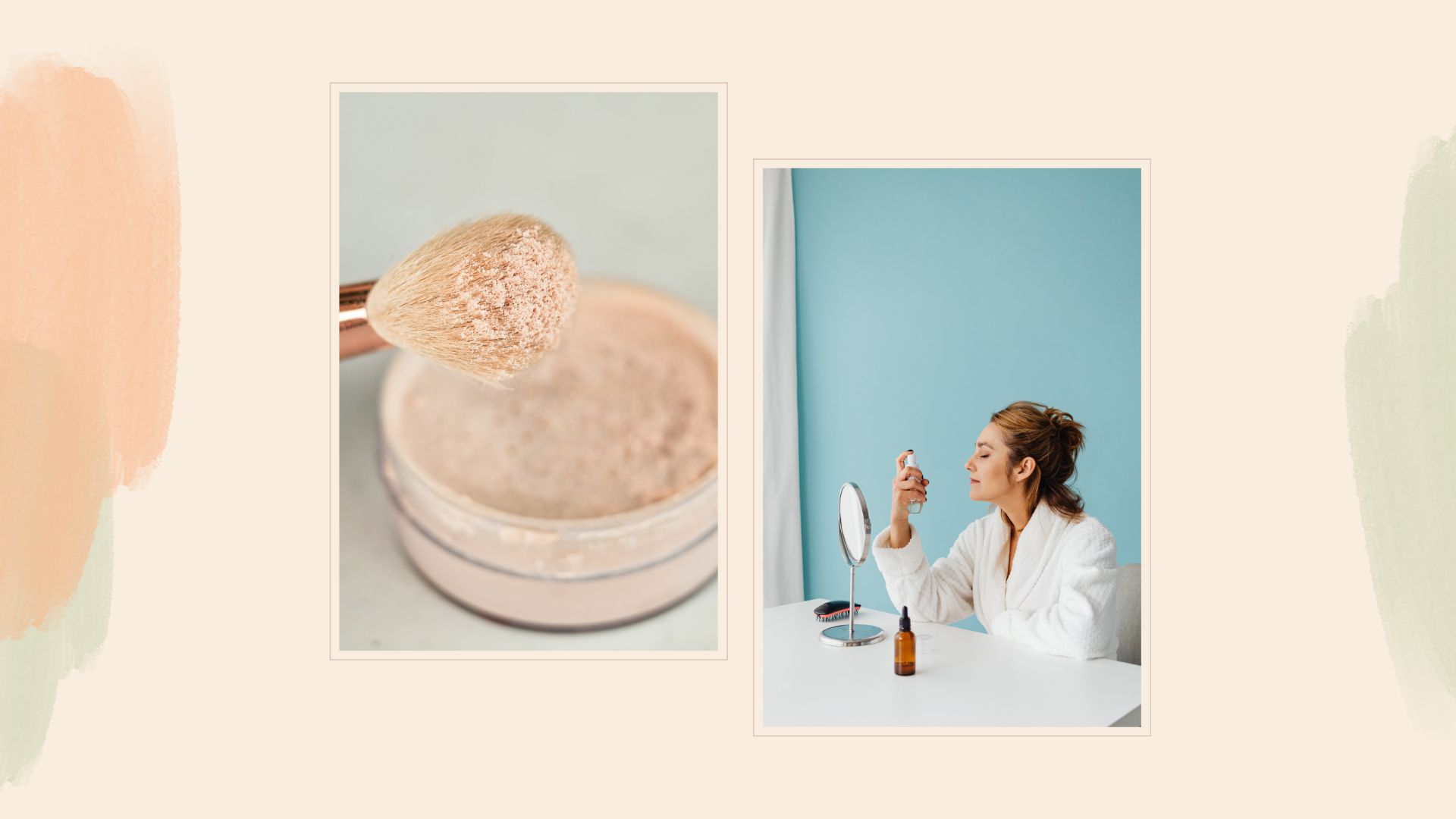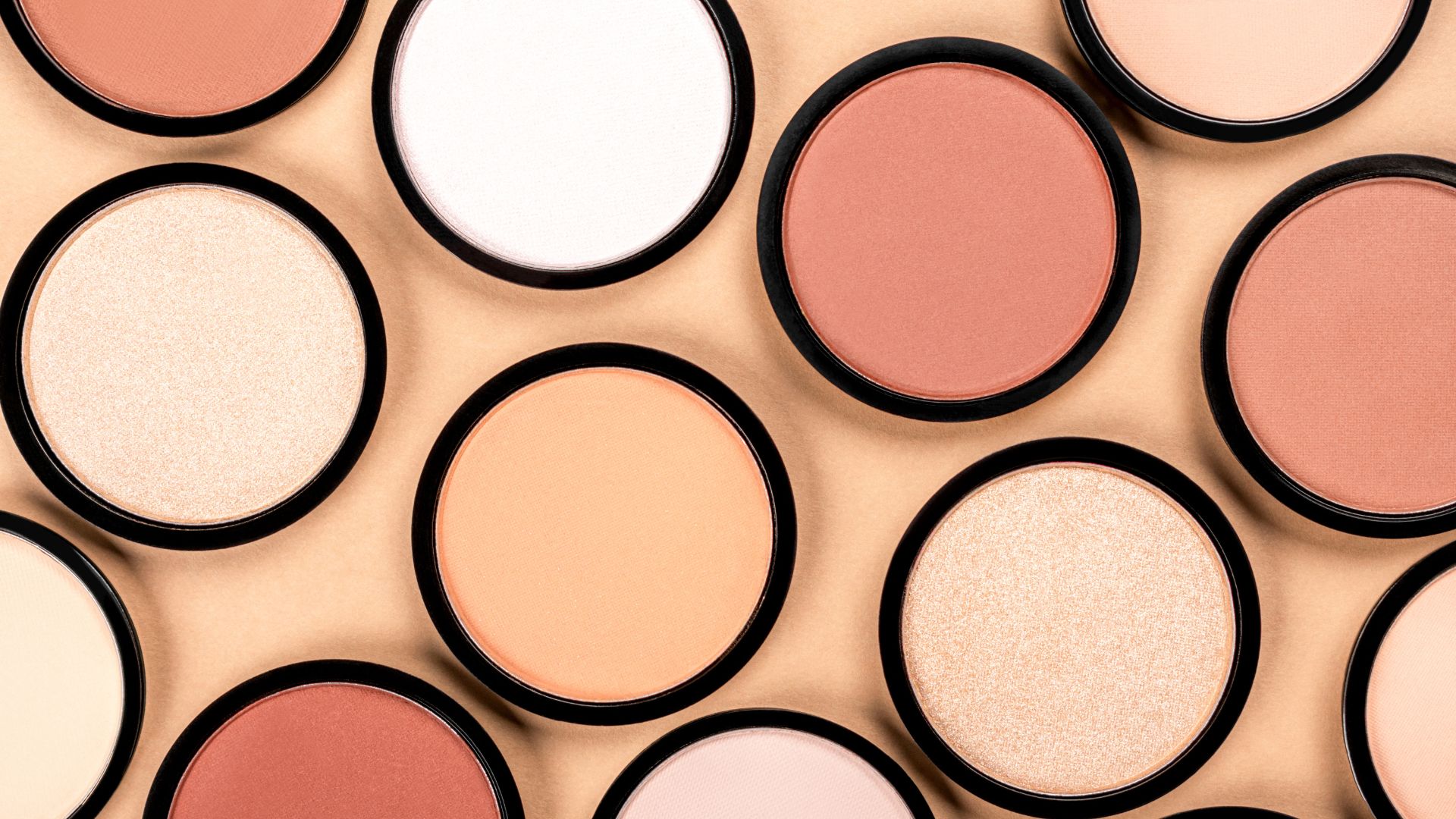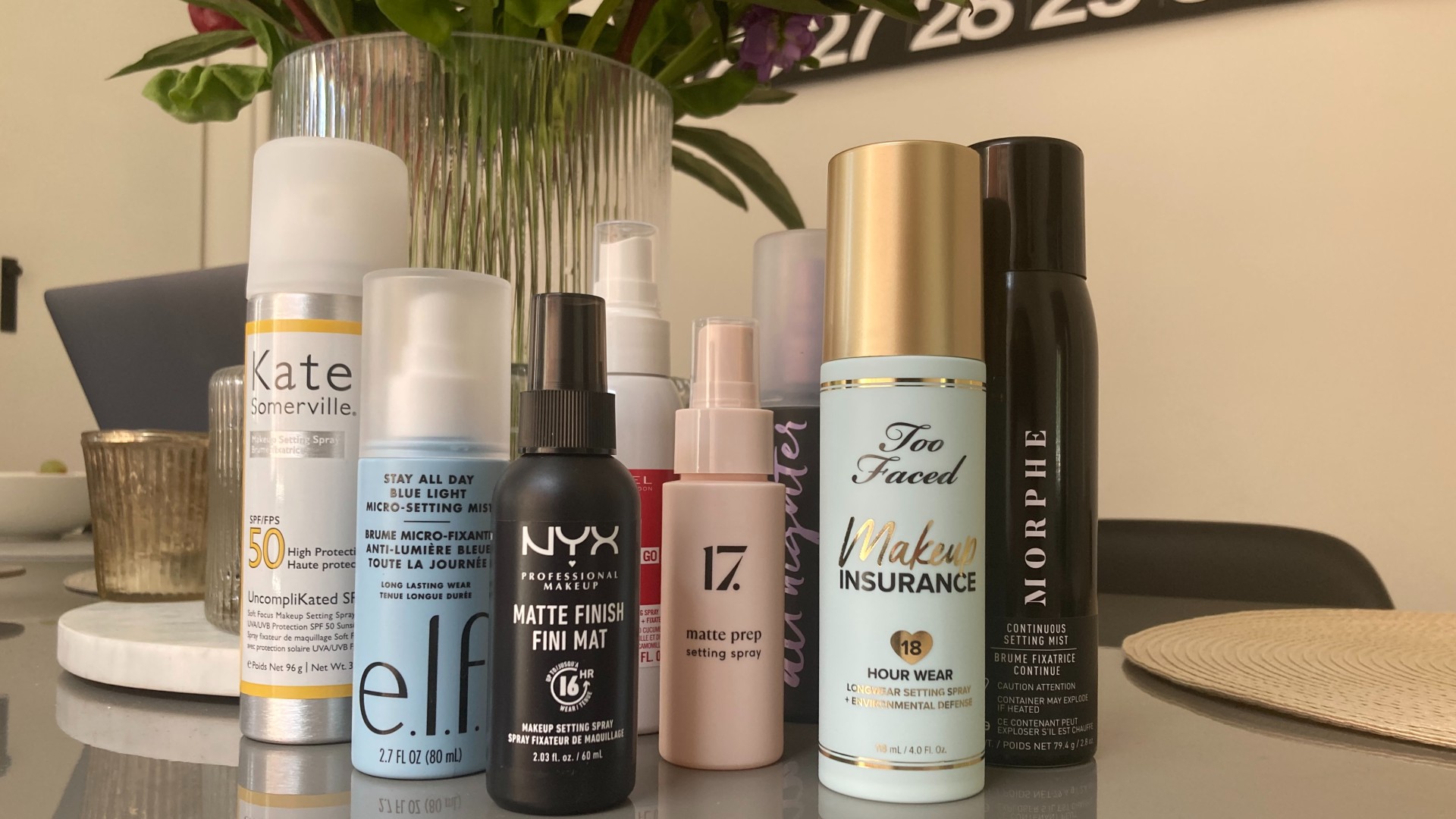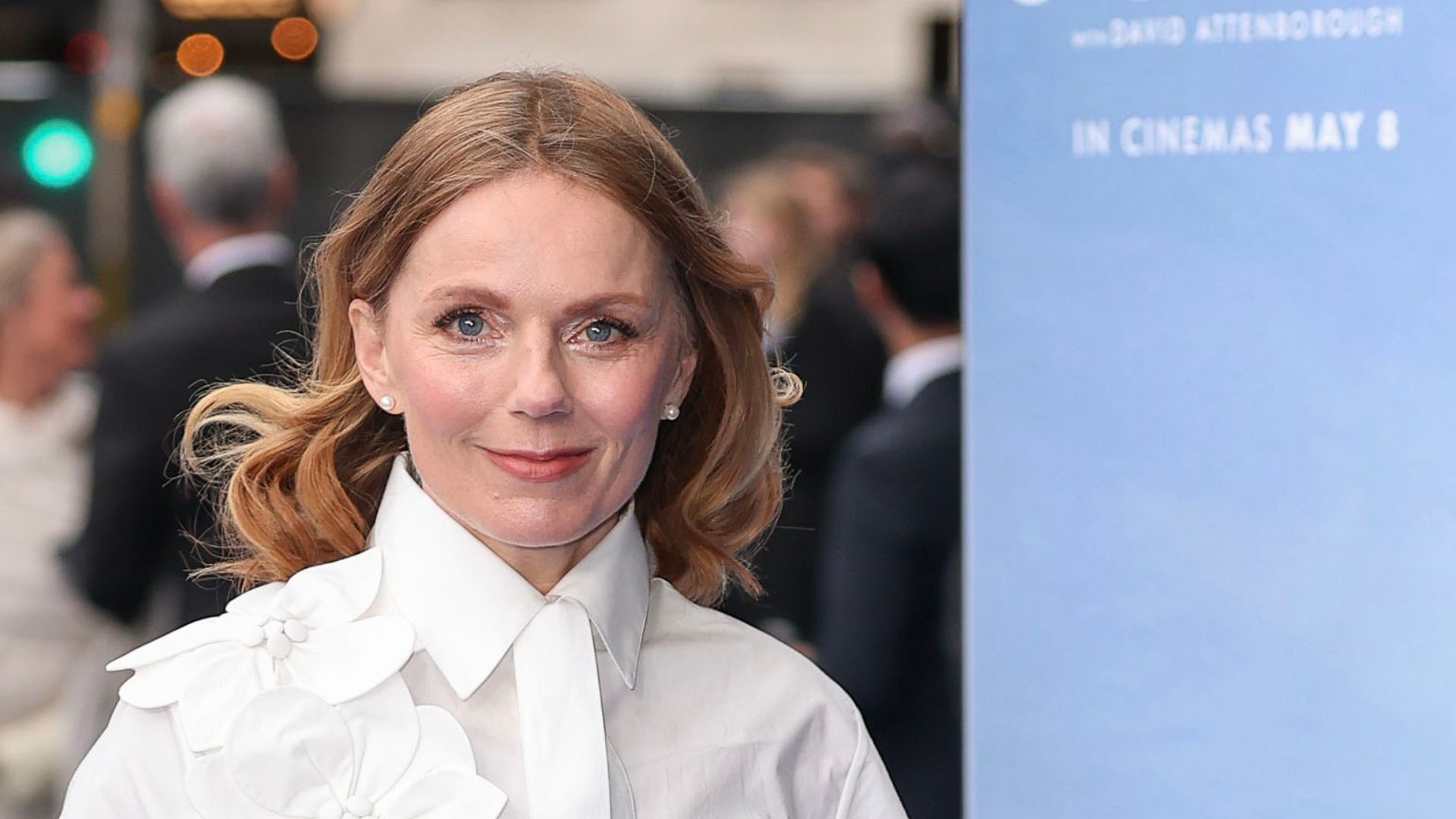Setting powder vs setting spray: Which is better, do you need both and how to pick the right product for your skin type
Our Beauty Writer answers the question, 'Which is better between setting powder vs setting spray?' and breaks down how to pick the right product for your skin type


Rachael Martin
When it comes to setting powder vs setting spray, you don't really need both products in your make up bag if you're trying to be prudent with your cash. But, having at least one setting product in your kit is a makeup essential.
The longevity of your makeup base relies not only on knowing how to apply foundation properly, but also on the setting products you use to help lock your makeup look in place. There are a multitude of product options out there, and our beauty team has tried them all to bring you guides to both the best setting powders and the best setting sprays.
However, while both setting powder and setting spray will help you achieve a flawless and long-lasting finish, they do have very different benefits and are rarely used together, so often it's a case of deciding between the two.
The two most important factors to consider when deciding between setting powder and setting spray is your skin type and what your desired finish is. But the different benefits and potential pitfalls of the products need to be weighed up, too.
Beauty Writer Annie Milroy and makeup artist Brooke Simons break down the differences, benefits and downsides of the two products below to help you find the setting technique that's right for you.
Setting powder vs setting spray at a glance
| Header Cell - Column 0 | Setting powders | Setting sprays |
|---|---|---|
| Finish | Matte | Dewy |
| Skin type best suited to | Oilier skin types | Drier skin types |
| Application | Use a brush or powder puff for targeted application | Spritz or mist direct onto skin |
| Best used for | To set liquid makeup products | Melting makeup into the skin so it's fresh and long-lasting |
| Main benefits | Absorbs oil and mattifies shiny areas of the face | Hydrating and prevents make up smudging or fading. Most sprays have no tint and will suit all skin tones. |
| Main cons | Overuse can result in dry or cakey look and choosing the wrong shade will alter natural skin tone | Applying too much can result in makeup sliding |
What are the key differences and similarities between setting powder and setting spray?
To put it simply, a setting spray works to keep your makeup in place with the added skincare benefit of hydrating your face for a fresh, natural look.
Setting powder will also keep your makeup in place, but it works to remove excess moisture and oils from your complexion instead, and at the same time helps to provide a flawless, airbrushed finish.
Sign up for the woman&home newsletter
Sign up to our free daily email for the latest royal and entertainment news, interesting opinion, expert advice on styling and beauty trends, and no-nonsense guides to the health and wellness questions you want answered.
Another benefit of setting powder is that the product provides a more targeted application. Unlike setting spray that you mist over your whole face, you can choose which areas you want to apply the powder to, targeting spots like your forehead where you might be more prone to shine.
Much like your best powder foundations, if you want a smooth, matte finish then a setting powder will be a better choice for you, whereas a setting spray is ideal for those who want to hydrate their skin and are looking for a more natural, and fresh finish.
Setting Powders - the details

Setting powder is a great product to use to keep makeup in place all day - especially in the summer months when you might have excess oil or moisture on your face thanks to the heat, humidity or SPF products (use specific sunscreen for oily skin to combat this too). This is because the powder works to absorb oil, leaving a mattified finish on the skin.
"Setting powder is used to mattify areas on the face to set makeup in place and reduce movement or creasing,” Simons explains. "Powder is used to set liquid makeup products in place for long-lasting wear and to mattify oily or shiny areas on the face."
"Powder tends to suit oilier skin types better as they work to absorb excess moisture and set your makeup in place," MUA Brooke Simons continues.
"The overuse of powder can mean a dry or cakey look, but if you are finding this problem then opt for a loose powder, as this will set your makeup in place and mattify, while still maintaining a glowy complexion."
Setting Sprays - the details

A good setting spray will work to refresh and hydrate your skin, just like the best face mists, and because of this they are better for drier skin types. A hydrating setting spray will work to combat any areas of dryness or flaking and this helps makeup to sit better on the skin and, in turn, last longer.
"Setting spray is a misted liquid used to help keep your makeup fresh and long-lasting. It works by setting the makeup in place by forming a protective layer that will prevent smudging or fading," Simons explains. “Setting spray is used to melt makeup into the skin which can leave a more dewy makeup finish."
"As well as setting your makeup, they’ll also help with the overall appearance of your skin, giving it a plump look and a healthy glow."
The misting application method of setting sprays makes them incredibly easy to apply - simply spritz and go - but this also has its downsides. If you apply too much setting spray to your face it can have the opposite effect on your makeup, causing it to slip because it's over saturated with moisture.
How to use setting powder vs how to use setting spray
Expert makeup artist Brooke Simons explains, "When using a setting spray, make sure there is enough distance between the bottle and your face before you mist your face, so that no large droplets ruin your makeup."
"With a setting powder, start with a small amount and build up accordingly if needed. Use a translucent powder for lighter, more natural coverage, and if you want a dewy result, then use the powder to set concealer and oily areas only. If skin is prepped well there is no need to powder the whole face."
Brooke adds that you can also "set concealed blemishes by pressing powder on top and brushing away the excess."
When to use setting powder vs setting spray
Knowing when to use a setting powder vs setting spray is crucial, as the order in which you do so is super important to how effective they are.
If using both setting powder and setting spray, make sure to use your setting powder first, before you use a setting spray. The setting spray should be used last to set everything in place.
Simons explains, "the best time to use a setting spray is after your application of liquid products, to set everything in place."
If you're just using a setting spray then Simons suggests, "You can spray either in between each makeup product application (i.e after foundation, then again after concealer) or at the end of the complete makeup look."
Our beauty writer's verdict on the setting powder vs setting spray debate
As someone that has fairly normal to slightly dry skin, my complexion suits both setting powder and setting spray. If I had to pick just one winner from the setting powder vs setting spray debate, then my champion would be a setting spray. It's easy, versatile, and has extra skin benefits.
If you don't have oily skin, then you really can't go wrong with a setting spray, they are easier products to use and have so many skincare benefits too. I use a setting spray every day before each of my liquid products to really help plump and hydrate my skin.
I always reach for powder on the days I know I'm going to sweat or need my makeup to last from dawn to dusk. Setting powders are a great option for people who have oily complexions and need to mattify their face but I would say that they are just ever so slightly trickier to apply and make look flawless.

Annie Milroy is the Beauty Writer for Woman & Home and other publications.
She spent three years studying Journalism and English Language at the University of Portsmouth before starting her career in magazines in 2017. After 8 years in the beauty industry, she's grown very fond of any product that can give her that 'my skin but better' finish, and anything that hydrates her seemingly always parched face.
When she’s not working, she’s shamelessly watching back-to-back Real Housewives episodes, spending all her time with her beloved yellow Lab, Freya, and hunting down the best carb spots London has to offer.
- Rachael MartinDigital Editor - Woman & Home
-
 The ‘little show’ that became a cultural phenomenon - Ruth Jones deserves every accolade there is for Gavin & Stacey
The ‘little show’ that became a cultural phenomenon - Ruth Jones deserves every accolade there is for Gavin & StaceyThe actress took home the BAFTA for Best Female Performance in a Comedy and has hinted at another collaboration with James Corden
-
 Geri Halliwell's summer-ready white outfit is a fresh spin on florals if you're not a fan of prints
Geri Halliwell's summer-ready white outfit is a fresh spin on florals if you're not a fan of printsAppliqué flowers made for a stunning extra detail on her crisp shirt and skirt combination